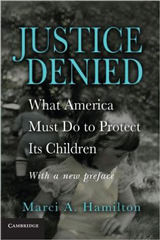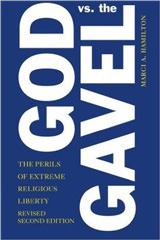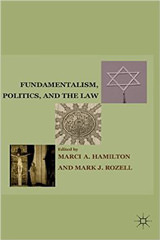It goes without saying at this point that children are “persons” under the Fourteenth Amendment. That is to say, they have constitutional rights. They are no longer property of their parents as they were for centuries; on that we can all agree. Yet the contours of the rights are emerging incrementally. The United States actually had a society for the prevention of cruelty to animals before it had one for children, so this is no mean feat! Of course, the rest of the world has already gone down this road with their ratification of the Convention on the Rights of the Child, as I discussed here in the context of the crisis of family separation at our border. The development of a children’s civil rights has been painstaking, with stops and starts. We saw both during the 2020 Term.
Children’s rights were implicated in six cases this last Term, as you can see here. In three cases, children’s interests were not vindicated or only tangentially related. In Jones v. Mississippi, the Court made it easier for courts to sentence persons under age 18 to life without parole when they commit homicide, and in Nestlé USA, Inc. v. Doe, the Court invalidated a lawsuit brought by six people from Mali against Nestle and other companies, who alleged that they had been sold into child slavery on a farm in Ivory Coast, on the grounds that the suit would be an impermissible extraterritorial application of the Alien Tort Statute. Another case only indirectly affected children because it involved a convicted child sex offender, but it was focused on technicalities under federal habeas corpus law: Alaska v. Wright.
Three Major Cases Directly Implicating Children’s Civil Rights Were Decided at the End of the Term
Three major cases that dealt with children were decided in the closing weeks of the Term: Fulton v. Philadelphia, addressing whether a religious social services agency can refuse to place children with same-sex couples; Mahanoy Area School District v. B.L., addressing whether a teen could be punished for speech on Snapchat, off school grounds and addressed to her own audience; and NCAA v. Alston, addressing whether the NCAA can deny student athletes education-related benefits while exploiting their athletic achievements. From the perspective of children’s civil rights, two out of three cases took positive steps for children, the speech and NCAA cases. The foster care case failed children, though, because it didn’t even consider their interests. Remarkably, all three cases garnered at least 8 votes for the majority position, so we can be certain that these principles—whatever they are—have some lasting power.
Expanding Children’s Rights to Emote on Social Media About Disappointments Without Being Penalized by the School
In Mahanoy Area School District, a teenage girl didn’t make the Varsity cheerleading squad and emoted angrily on Snapchat. She posted it on her “story” so that it would be available to her 250 friends for 24 hours. She included some colorful language, and a friend displayed the “finger” with her in defiance. In a non-networked world, this would have happened in one of their living rooms and been soon forgotten. In this era, someone took a screenshot, shared it with the coaches, and in their infinite wisdom, the coaches removed this teen from the JV squad. The Supreme Court held her speech is protected and the school had overreached. Only Justice Thomas dissented; he has always been a strong proponent of extreme deference to school authorities, so that is not news. With eight Justices siding with the student, it is good news for children’s First Amendment rights, in no small part because it reflects a child-supportive approach and one that limits the school’s reach beyond school settings.
Opening Opportunities for Student Athletes vis-à-vis the NCAA
Millions of kids play sports. Many who are talented play with hopes for a college education and scholarship. Their entire childhoods can be shaped by the family’s goal of getting the child into college and doing so with financial support. Families sacrifice and so do the kids, as they focus and train to fulfill the dream of a better life. The perceived future benefits those children will receive play a major role in the motivation of the child and parents. Until this decision, the “benefit” was largely for the college or university, as well as the NCAA itself, which rakes in huge revenues from events like college football and March Madness! The president of the NCAA, commissioners of the top conferences, college athletic directors, and top Division I college football coaches all enjoy salaries in the millions, while the students have been barred from capitalizing on their own talent. The schools provided a conditional athletic scholarship to the student athlete, which can be yanked if they are injured, as the NCAA used the talents of the recruited athletes to increase its own profile, popularity, and bottom line. Moreover, the NCAA has strictly limited the benefits a college athlete can receive, even if those benefits are education-related.
The Supreme Court in NCAA v. Alston unanimously ruled that the NCAA violated the antitrust laws by operating in concert to dramatically limit student athlete educational benefits. The opinion is limited to the NCAA; individual conferences could independently choose to impose these rules. Still, the decision is a major step forward to right the balance of power between student athletes and the university sports complex. It moves young athletes from being cogs in the NCAA’s and universities’ profit centers to having some agency over their chosen path. The NCAA opinion is a further iteration of the development of children from property to persons and definitely a net win for children and young adults.
A Foster Care Case Focuses on a Social Service Agency’s Needs, But Not the Kids’
Children were sidelined, however, in Fulton v. Philadelphia, even though it was a case about the placement of children in foster care. Chief Justice Roberts’ majority and Justice Alito’s concurrence in the judgment focused single-mindedly on Catholic Social Services’ needs and beliefs. In both, we hear about the history of the Catholic Church’s service to children. Each of these Catholic Justices goes out of his way to paint CSS in the most favorable light possible as a haven for children. The elephant in the room—widespread child sex abuse by serial predator priests around the globe for centuries—is never acknowledged.
The majority described a flattering history of CSS that glaringly omitted any mention of the sex abuse culture and patterns of cruelty to children entrenched in the Catholic Church. How could anyone say CSS is anything but a beneficial public servant? Well…..
The Fulton decision reminded me of Wisconsin v. Yoder, the veritable love letter from the Court to the Amish that blithely permitted parents to pull their children out of high school despite the state’s compulsory education law, without even considering the welfare of children who don’t graduate from high school. The Court’s unstated assumption was that the parents’ faith would forever be the children’s, and that the choices of the children didn’t matter. We now know that for those children who depart the Amish fold, life can be very difficult, in part because they don’t even have a high school diploma.
In Fulton, the focus was on the beliefs of Catholic Social Services and its refusal to provide foster care referrals of children in need of foster care to same-sex couples. As usual, in Fulton, like Yoder, the adult Justices provide ample space for the adult litigants’ desires, but let the children’s needs disappear into the ether. Forget that the purpose of compulsory education and foster care is to help children thrive. From a child-protective perspective, Fulton is a sad opinion.
The holding turns on a First Amendment mainstay—complete government discretion to suppress religious speech or conduct triggers strict scrutiny. Fulton is really just Church of Lukumi Babalu Aye v. City of Hialeah redux. The regulation burdening CSS was part of a scheme that was not generally applicable. The fact that Philadelphia granted itself full discretion to lift or apply its non-discrimination rules doomed the scheme. There is no legal news there.
What concerns me is that the decision treats CSS as a benign force in children’s lives when it is, in this instance, more of a wolf in sheep’s clothing. CSS refuses to place children with LGBTQ couples. Yet, it will place LGBTQ kids in heterosexual households, and it will place children with single LGBTQ individuals. What is the message here? Well, it appears that you can be LGBTQ, but just don’t be in a committed relationship, or, I guess, don’t have sex. LGBTQ are expected to live celibate, lonely lives, and, if they do, they can take care of a child in need! But if they commit to a solid, married relationship, no children are allowed.
There is another unspoken reality that needs to be part of this public discourse. The opinion not only fails to acknowledge the children endangered by the Catholic Church through intentional sex abuse coverups, it also fails to acknowledge the Catholic bishops’ many websites dedicated to “persuading” LGBTQ youth to convert to being straight. The opinion treats CSS’s willingness to place LGBTQ youth in homes and its willingness to let LGBTQ single adults engage in foster care as somehow softening their rule against referring children to LGBTQ marriages. To the contrary, they do those things because they believe in the need to “convert” those children to what church law considers “true” sexuality. This is part and parcel of the corrosive cultural attitudes that undermine LGBTQ youth on a daily basis, as the Trevor Project tragically documents. The opinion never addresses the needs of LGBTQ youth to be a part of healthy, committed LGBTQ households, and pretends that CSS is not undermining LGBTQ children with its policies.
Like Yoder, Fulton is a case sacrificing children to adults’ religious “rights.” Remember Prince v. Massachusetts, where the Court held that parents do not have a right to make martyrs of their children? They can believe what they choose, but they can’t harm their children. The same principle should apply to CSS—the faith can believe whatever it chooses, but that does not qualify them to take taxpayer funds and in turn undermine the well-being of children by either refusing placement in healthy homes that reflect their identity or by sending messages of hellish judgment.
But don’t let me get too carried away. The holding of this case is not that CSS has an absolute right to avoid the anti-discrimination laws. All nine members of the Court agree the cardinal error committed by Philadelphia is including a discretionary exemption to the anti-discrimination laws in the foster care agency contracts. As I said above, the error is a City of Hialeah one. Philadelphia would do well to remove the individualized assessment and, how about this: cast its contracts for children in light of children’s needs. No agency should be permitted to take taxpayer dollars unless they will unequivocally treat children with respect and dignity whether they are children of color, LGBTQ, disabled, or economically challenged.
The Court’s doctrine reinforced in Fulton requires a refreshing but ruthless neutrality and level of general applicability. Philly’s children in times of need deserve better than the individualized assessment currently in place, and far better than CSS can provide for them given its self-professed beliefs. CSS has the right to believe what it chooses. It does not have a right to harm children at will while it purports to serve the public.
As this issue works its way through the courts, it’s time to ask about the needs of children—first and foremost.









